Everyone wants to know how to taste wine. Here are the steps to taste wine like a pro:
- Swirl the wine (Color)
- Smell the wine (Smell)
- Taste the wine (Feel)
It’s not just about the taste of the wine, It’s how it looks, smells, and feels.
I want this to be a valuable resource to learn how to taste wine for beginners and understanding how to talk about wine as well as taste the flavors of wine.
The fun part is I get to teach you how to taste wine my way 😉
HOW TO TASTE WINE
There are a lot of different ways you can taste wine, but I’m going to show you the basics of how I taste wine, how I understand the flavors, and some of the terms I use to describe what I am tasting.
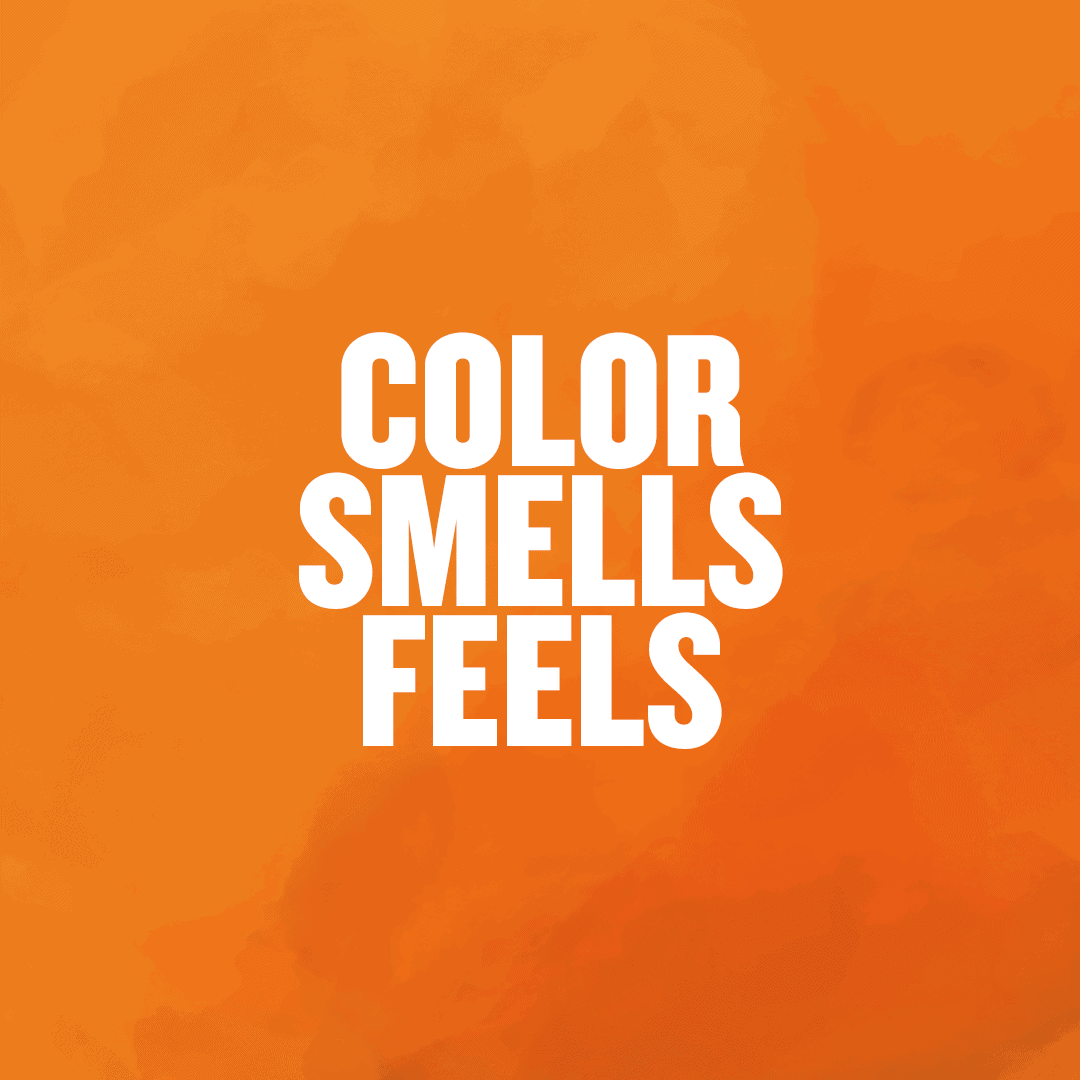
The reason I’m writing this is because I have some experience. I’ve tasted thousands and thousands of wines in my life. In middle school, I replaced text-books with magazines about wine. I read every issue of the wine spectator, cover to cover and consumed as much content as I could. My father, having immigrated from Russia, started a small wine store in New Jersey. I worked there every day since I was a teen. I started my career as the host of Wine Library TV producing more than 1000 episodes of wine content just like this.
Then I launched one of the first e-commerce platforms for wine in the US. My father’s business, WineLibrary remains one of the largest online retailers in the space.
If you haven’t seen an episode, maybe it’s time for you to take a look.. ☝️
HOW TO SWIRL WINE
The first thing that I tend to do when looking at a wine is I give it a quick swirl. Always.
The swirl is what aerates the wine, and gets all of the different flavors percolating.
So I give it a swirl, sometimes on the table, or sometimes in my hand.
And what I like to do is look at the color. Color is a huge factor in tasting wine. 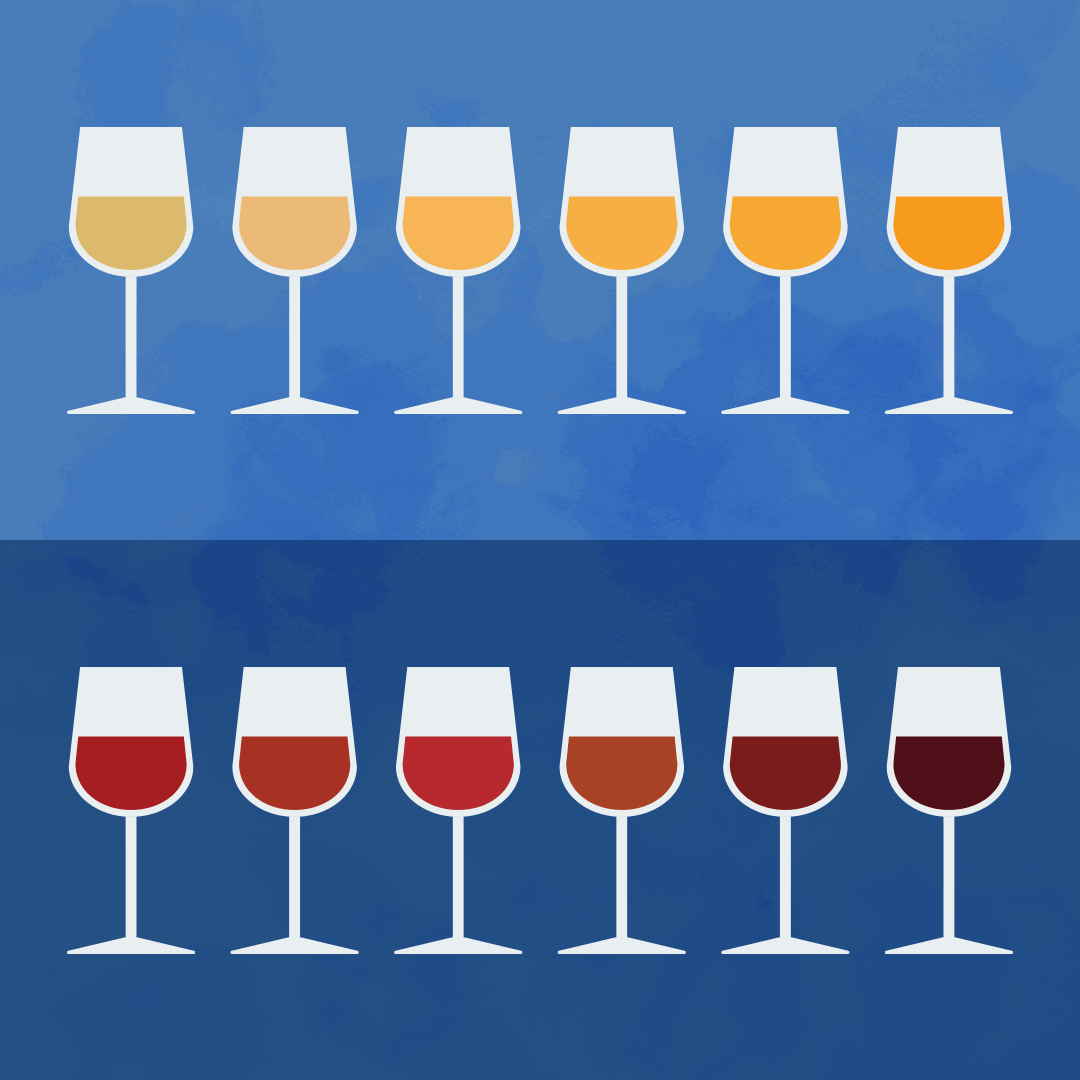
With a red wine, you’ll look for that really deep, dark purple or red. When you see that, it tends to make you think that there’s a little bit more complexity in the wine, a little bit more flavor.
If you see lighter colors, a lot of the time you might think it’s a pinot noir, which has a lot of complexity as well, but still certainly a good place to start.
With white wines, you see that golden color, sometimes you see the “pale white.” Usually, the darker or more saturated the color you see, the more “full-body” or flavorful and dense the wine is.
So that’s always your opening move. Take a look at the color. Do a quick swirl, get the air in, and analyze it.
By swirling the wine, you’re able to break down the tannins and you’re letting air come in and the flavors disperse and even out.
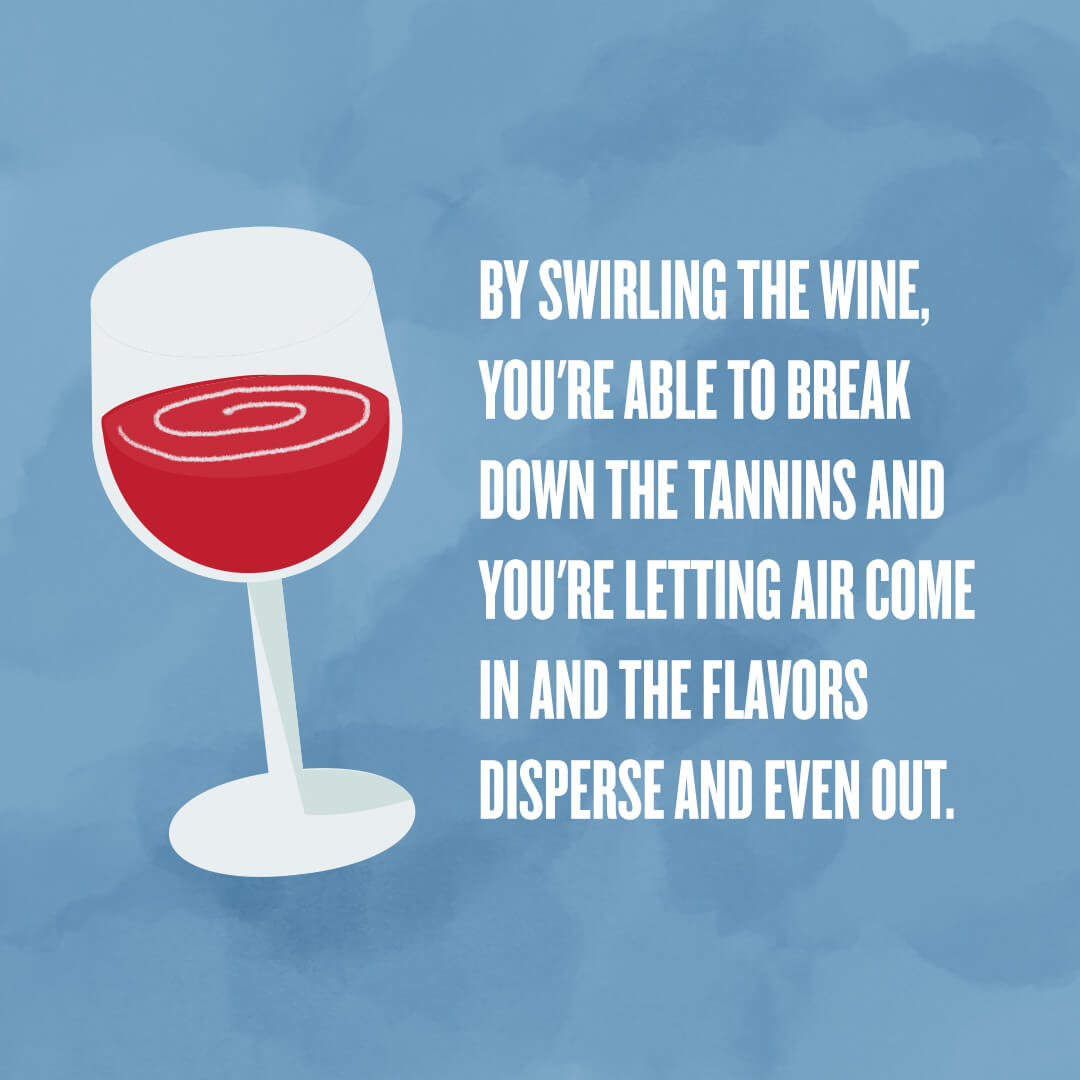
The next thing I do is I always give it a quick look inside, and then obviously, one of the most, if not THE MOST important part in tasting wine, is that first initial sniff.
HOW TO SMELL WINE
In order to smell wine, I like to put my nose completely into the glass, which, may not be the most “politically correct” thing to do when you are trying to learn how to taste wine at a restaurant, but I’m going to tell you right now, that is the move.
It’s the only way to smell wine.
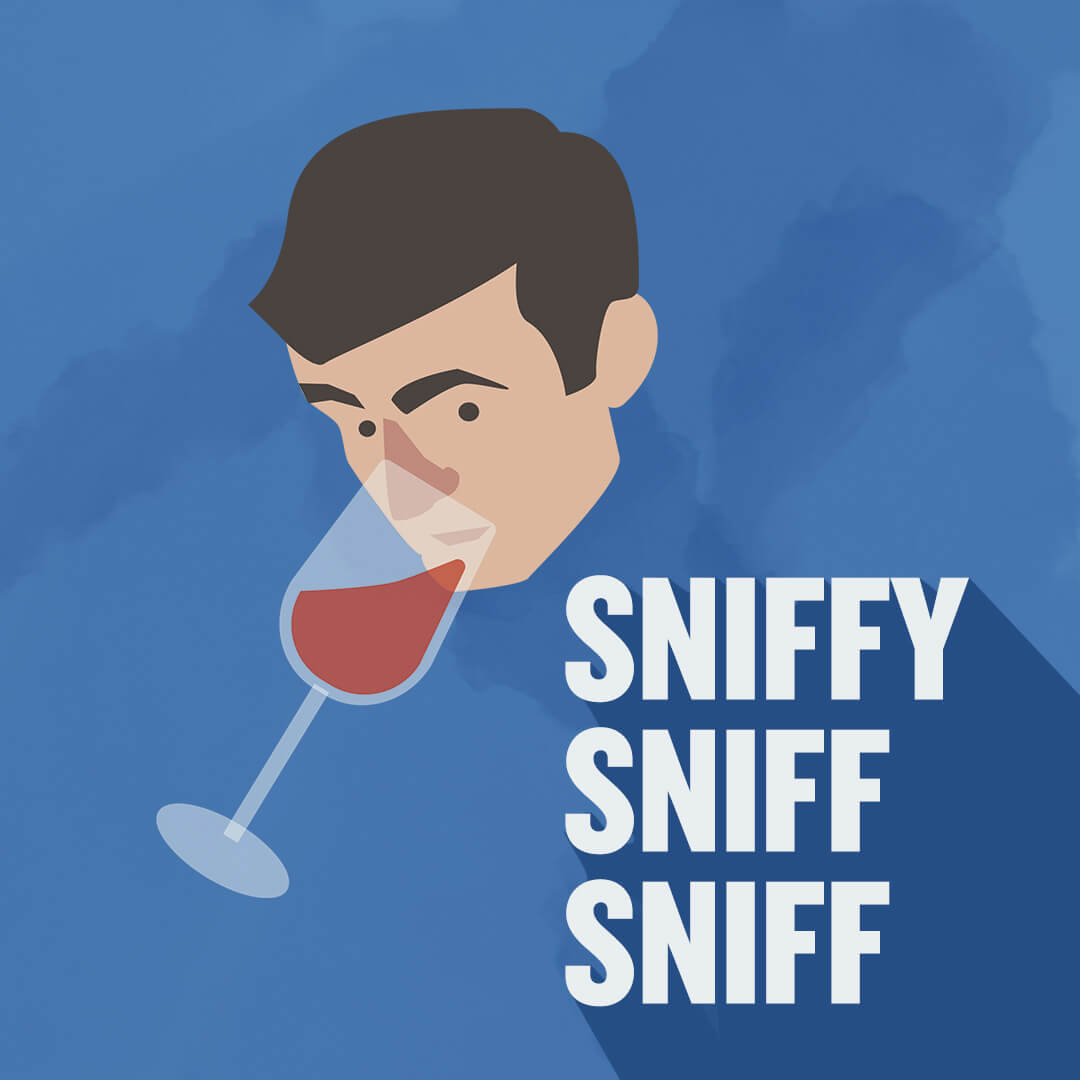
It’s as important as the taste. It is the crucial move. You get your nose completely in there, and you give it a very big sniff.

Now, don’t get silly or you will just start choking, suddenly alcohol and the sugars are going to get into your nose, and it will be a very unpleasant experience. But you give it a very serious sniff.
I personally like to give it two, three, four, five sniffs.
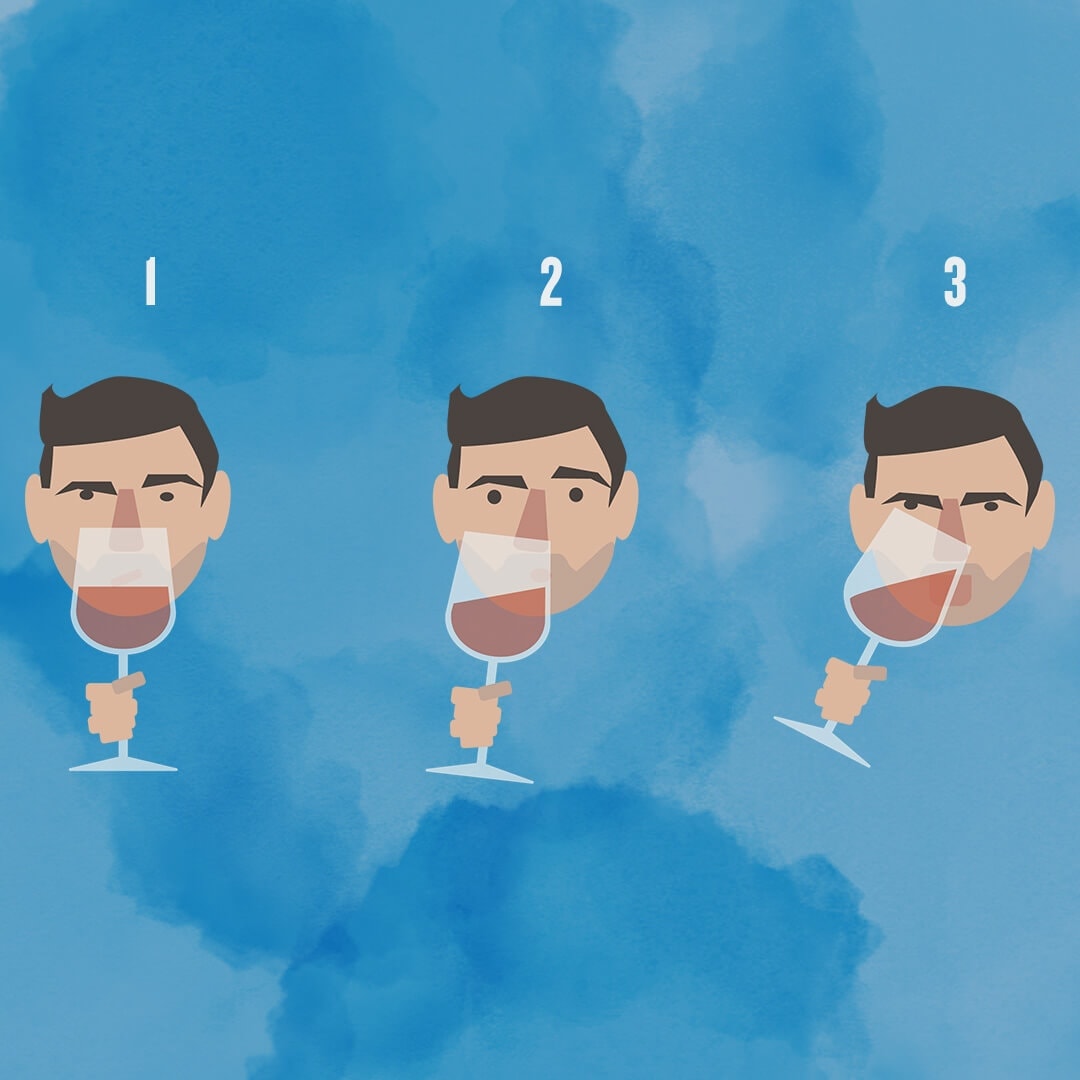
I sometimes go back to the whirl, then back into the sniff. You know, just from that little swirl in between those two sniffs, more flavor came in. So the more you can swirl it, the more you can sniff it.
It’s obvious to me. Now, the flavors you get are NOT as obvious. And really there is no wrong answer.
You’re always going to have those red wine or white wine flavors. You know, the standard flavors that, if you’re first getting into wine, you smell and taste. (blackberry, raspberry, strawberry etc.)
That’s just a combination of oak and steel and barrels and it’s the overall flavors of each wine, wherever the wine comes from, but when you first give it that smell, you’re really just looking for those subtle flavors that you may have not been able to sense otherwise.
Obviously, the more powerful your nose is, the better your sense of smell is, the less you have allergies, the better you will be at smelling wine.
The smell is just so important. A lot of people don’t take “smell” into account at all, and it’s a huge mistake and it’s one of the factors why you’re not tasting some of the flavors that you’ve read about or you hear me mentioning.
Next, I tend to like to look at the legs.
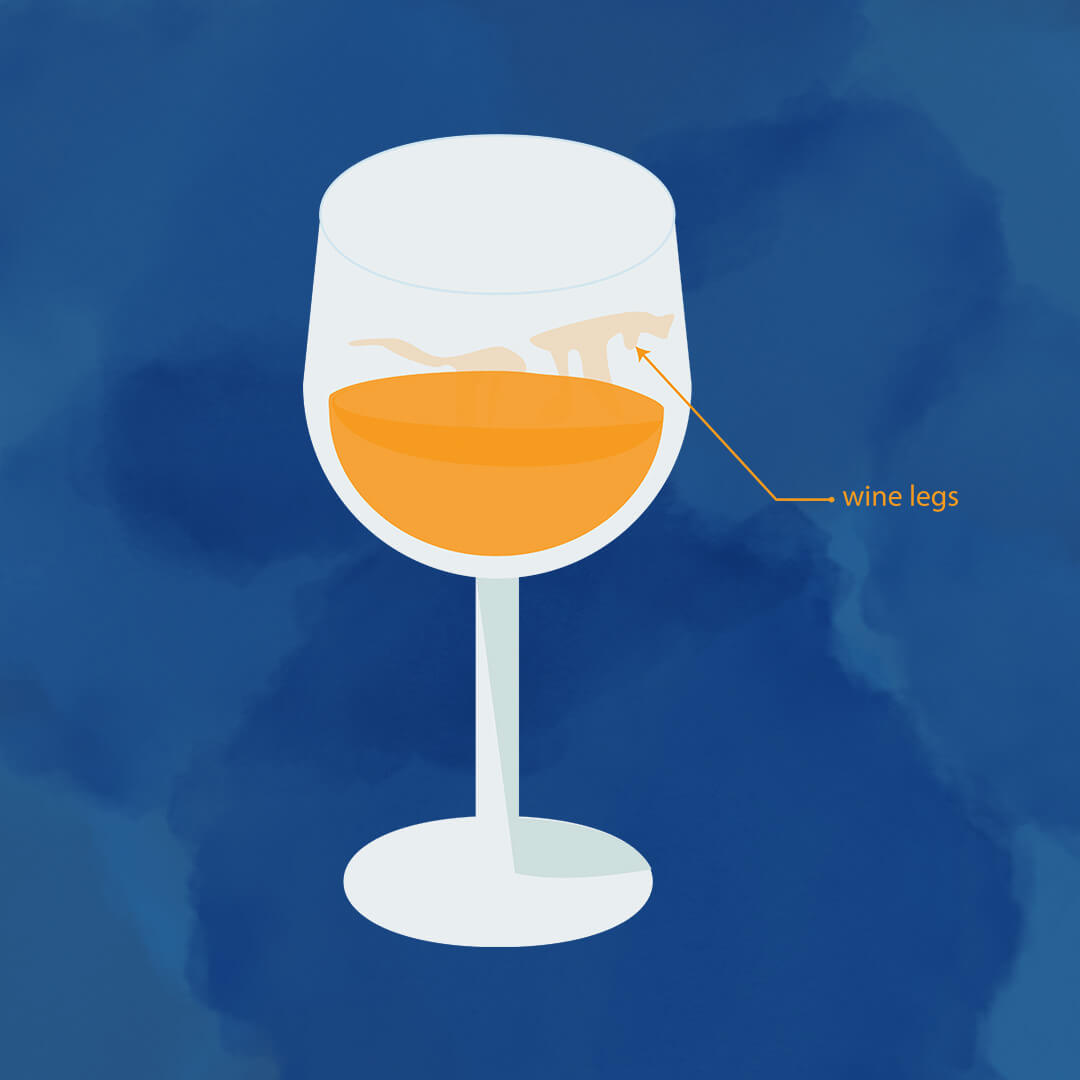
WHAT ARE WINE LEGS?
The legs of wine are the oily residue that goes around the glass. Now this is not a major thing. You know, 30, 40 years ago, this was a huge part of tasting wine. A lot of people swirl and analyze the legs. It’s a combination of the sugars and alcohols.
When you have big legs, you would think it’s a more “massive” wine or a wine with more alcohol or a little bit more serious. It’s a very subtle thing I like to do. It kinda tells me where the wine is on a scale of intensity.
To me, body-wise, the more legs, the bigger, darker the legs are, I tend to believe the wines are even more complex, but again, this wine has very little legs, and I know it’s a big wine. So it’s not a perfect science, it’s just a part of the routine that I like to do 😉
I think you get fun out of it, it’s fun to look at the legs sometimes, it’s just a clever little thing. But then once again, it’s much more about the nose.
I try to get the nose as much as possible before I taste a wine. It’s really setting up the senses, the flavors, this is when I’m starting to get excited.
3 WAYS TO TASTE WINE
And here’s where it gets really silly. To really taste wine, you have to slosh it in your mouth.
Now my wife has a tough time with this, so we have to practice with water, and you can do that as well. If you want to practice with some bottled water, practice swirling in your mouth.
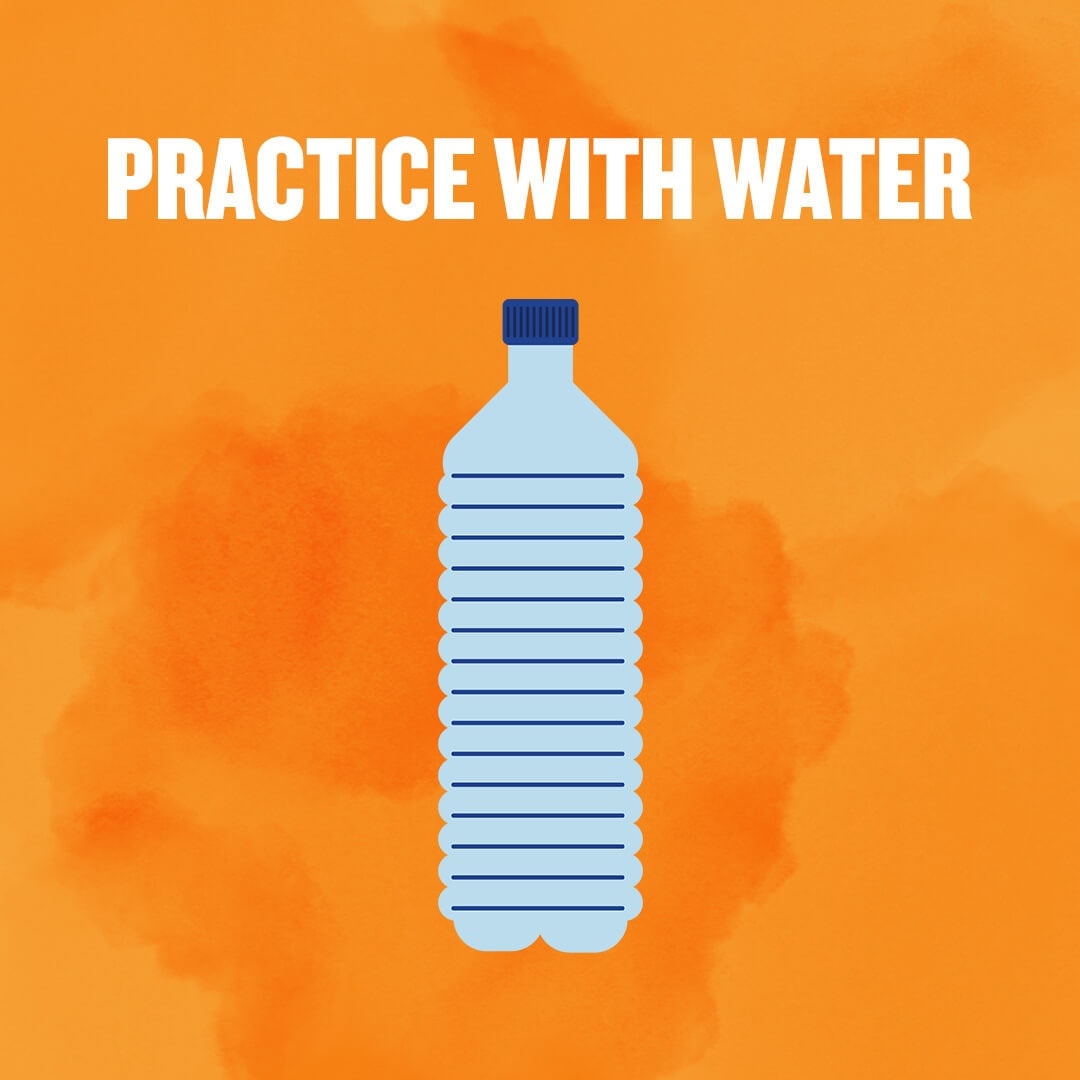
You know, making that bird sound that you might think of, is a very key element, because it’s bringing oxygen into your mouth field, into your palate while you’re tasting the wine, it lets some of the alcohol get out and more of the flavor kind of to stay in the fruit. It’s a crucial move, and if you’re completely into the tasting where you can’t get the air into your palate, you need to practice.
See what I’m talking about on one of my old wine library episodes 😉
To me, it’s an essential part. Other people will disagree. Again, this is really the way I like to taste wine and a lot of the people that I sell wine to and grew up tasting wine with tend to do it this way.
Why you want the air is because it coats your palate, allowing your tongue to hit as many flavors as possible.
There are different parts on your tongue that are going to pick up different flavors. So by coating your palate, coating your tongue, the back of your palate, you’re really looking to get the most out of it because it’s going to help you taste all of the different flavors in wine and give you a complete feel for the wine.
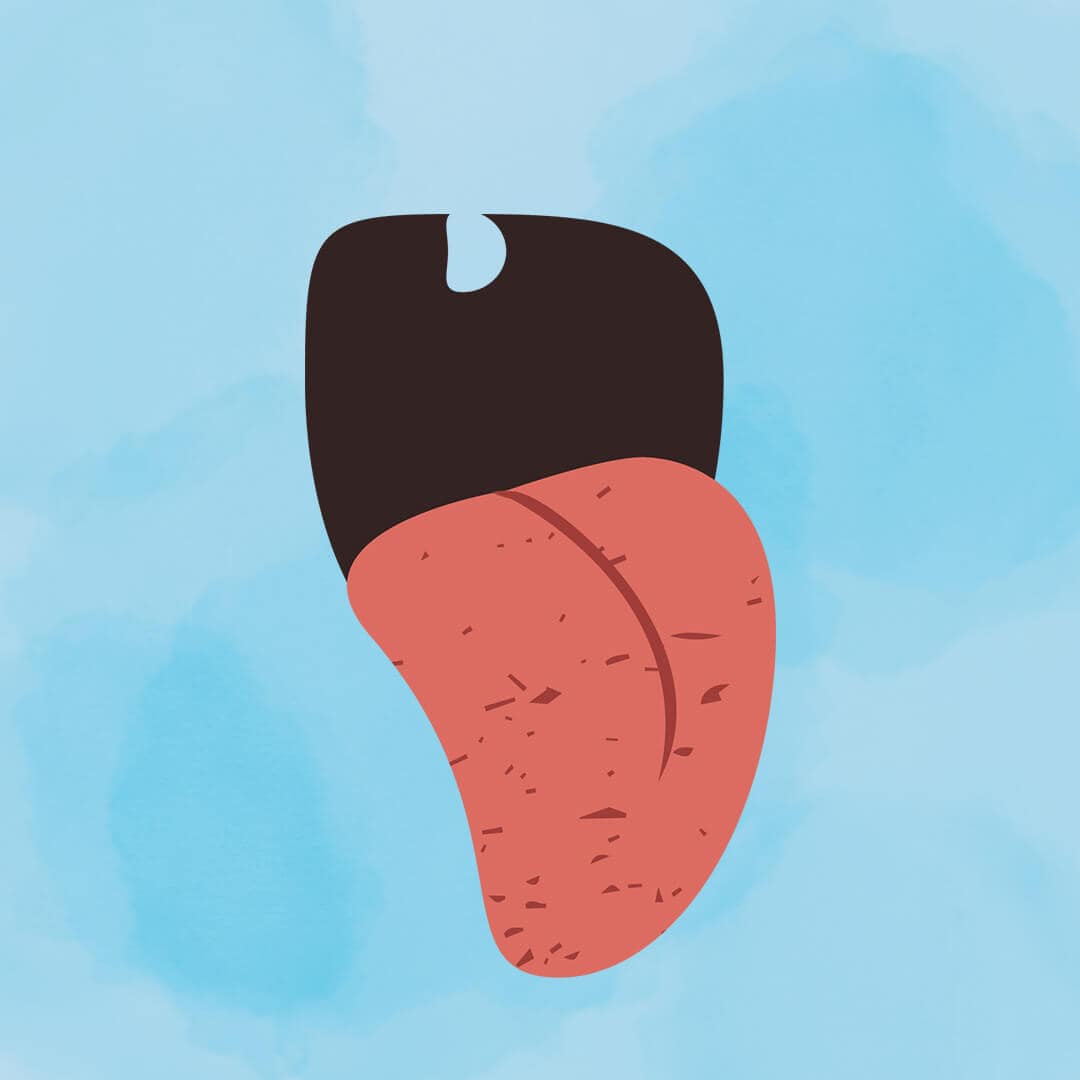
One of the final things I like to do, and then we’ll go in-depth a little bit more, is after I taste, I go right back to the smell.
It ties in all the flavors. You can get so much flavor from smelling the wine than tasting it and then back into the smell. It’s really kind of the pattern I like to stay in, it helps me put everything together and get that final flavor that I’m looking for.
Now, let’s talk about the flavor you’re tasting in your mouth and what you’re doing with that mouth feel.
THE INITIAL TASTE
That initial blast of flavor from the wine is very crucial because that’s that upfront fruit, and it’s your first impression. You know, it’s like a first date.
It’s your very first impression it’s like, “Hey, this is what it is.” When you’re swirling in your mouth and you’re getting the flavors in, and then you go into your swallow or your spit, you’re really tasting for a mid-palate, and this is a term a lot of people don’t understand.
THE MID-PALATE
The best way I can describe this is there’s that initial flavor you get when you first put it in your mouth, and then there’s obviously the aftertaste, which is really the flavor that sums up for most wine people what a wine’s about.
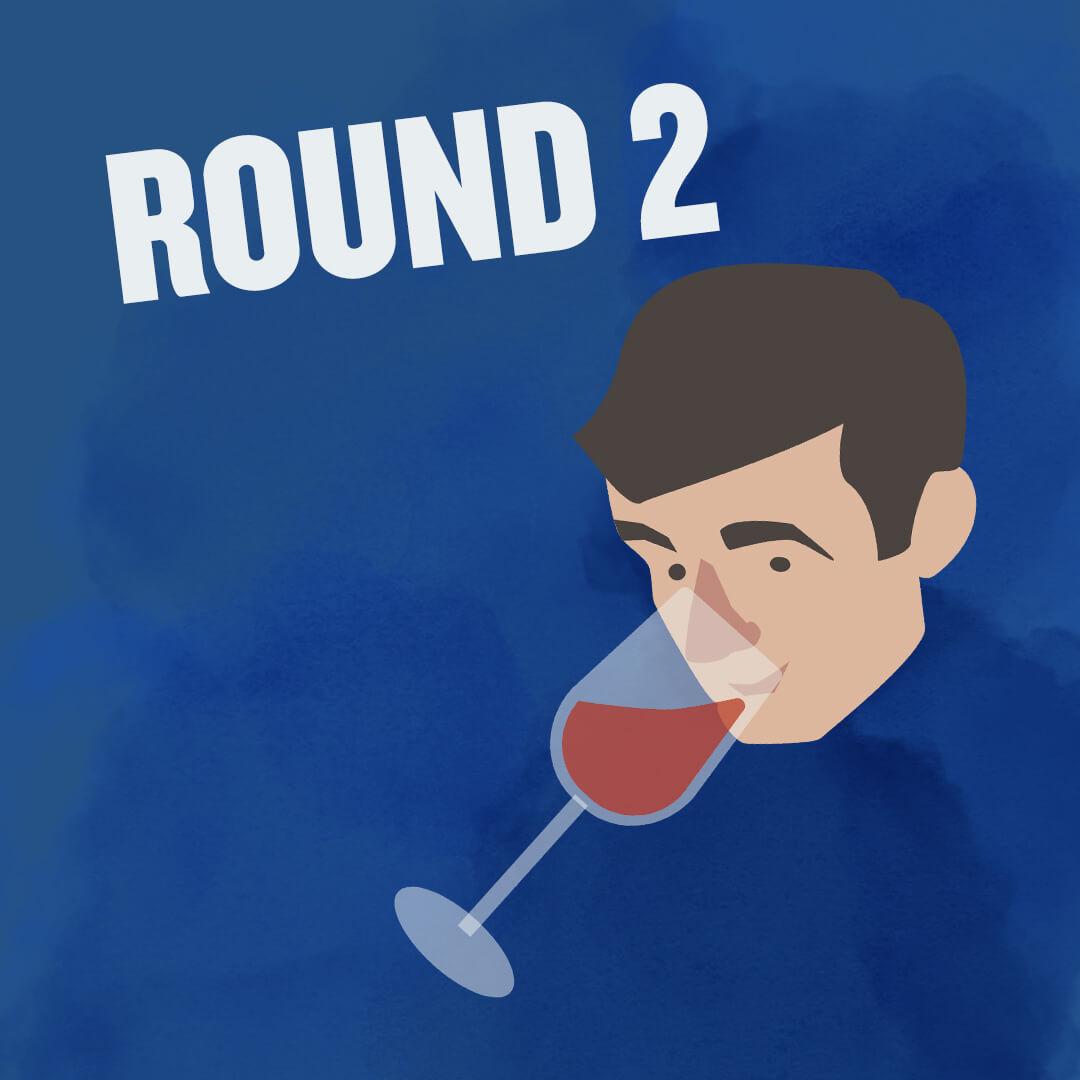
The finish, is it silky, is it smooth, is it tight, is it dry, is it bitter? For most people that are not extremely serious about wine, it’s an essential part of how they decide whether the wine is good or bad, and so to me it’s very interesting that mid-palate is something that most people don’t pay attention to.
The best way to describe the mid-palate is the transition of flavors you’re tasting in between the first taste and that final taste.
You’re going to really taste it as you’re swallowing on your palate. Now a lot of times, you won’t taste anything, and that’s because many wines are made very hollow.
If you’ve ever heard the term, “hollow” or “no mid-palate,” it’s because there’s really only two flavors.
The beginning and the end. But the really complex, interesting wines, and the wines that are enjoyable to me, wines like this that are better than what they’re priced at, have that exotic, interesting mid-palate, that extra flavor.
FLAVORS OF WINE
So .. it’s a three-flavor process. It’s that initial blast, when you’re tasting it as it’s swirling in your mouth as you’re about to go, and then when you spit or swallow the wine, that final flavor. It’s a three-step process for me, and that’s really how I like to taste wine.
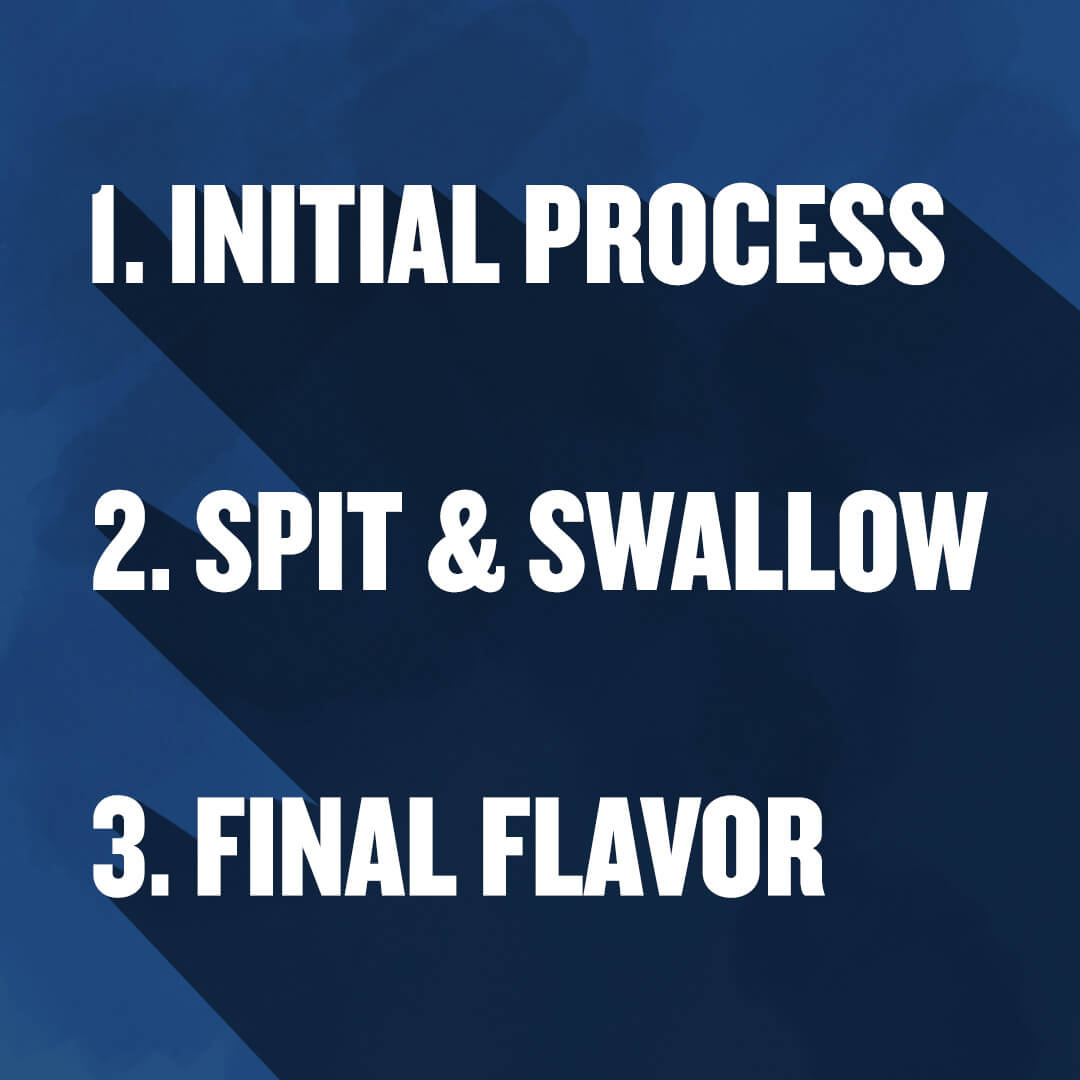
Now, we can really get into how do you pick up the flavors, how do you taste wines, but it comes down to a lot of visual, a whole lot of nose, and then finally, what you’re tasting on the finish, back to the nose, just bringing all the flavors together, really focusing, and not trying to outthink yourself.
Let the flavors come to you. If you let the flavors come to you and you keep tasting wine, eventually, you’re going really understand the different flavors and the different aspects of a wine.
Finding the Mid-Palate is such an essential thing. Try to find it. It’s going be hard in the beginning, really focus on the nose. If there is one thing you leave with in your how to taste wine checklist, it’s to use your nose. Get into it. A lot of people just swirl and then get right into drinking and tasting. Obviously, by the finish you’re going to know something about the wine, but focus on the nose, focus on the mid-palate, and I think you’re going to be well on your way to tasting wine in a different way!
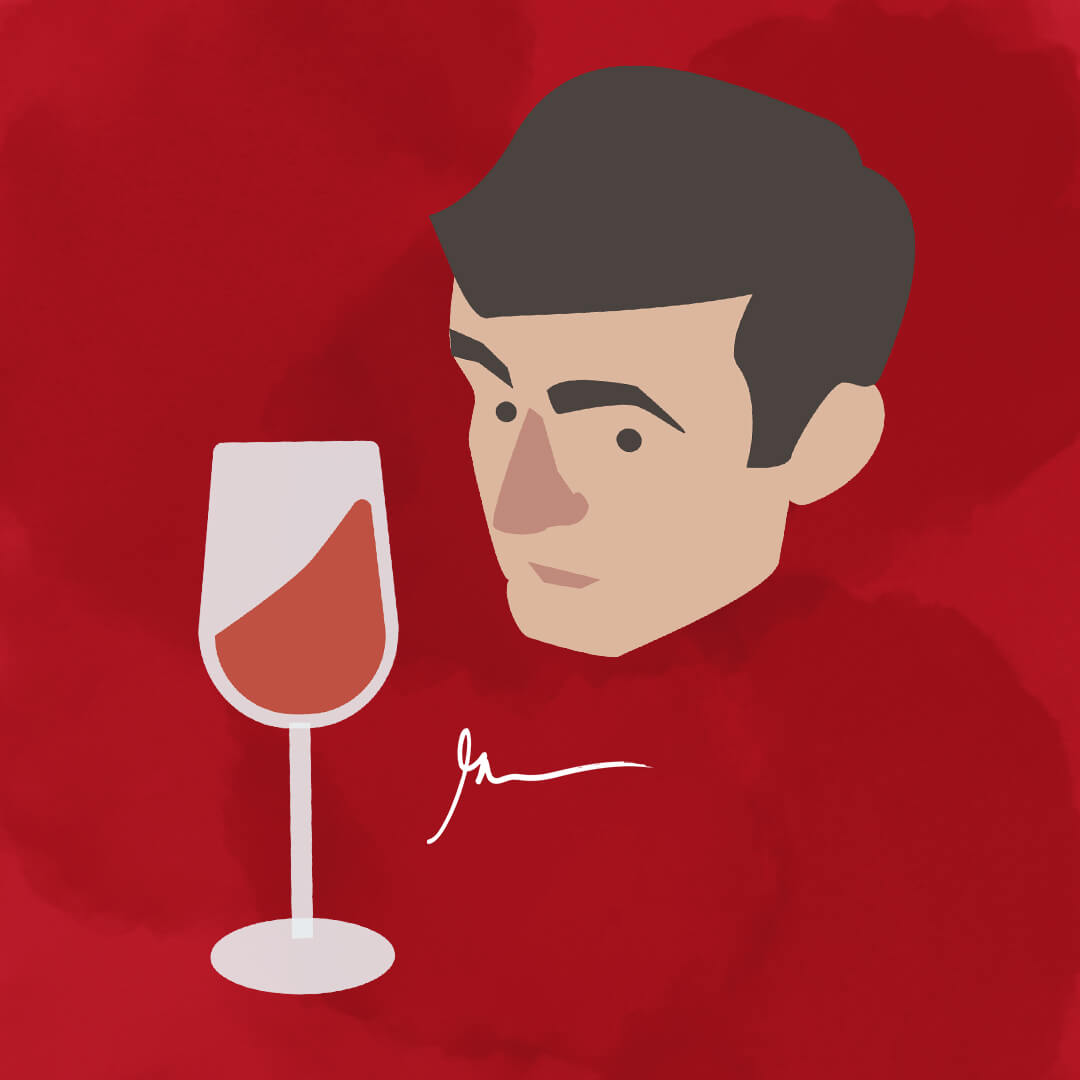












Cialis without a doctor prescription: Tadalafil price – Generic Cialis without a doctor prescription
Tadalafil price Max Pills For Men Generic Cialis without a doctor prescription
http://fastpillsformen.com/# viagra without prescription
http://maxpillsformen.com/# Buy Cialis online
Generic Cialis price: MaxPillsForMen.com – Buy Cialis online
Buy Tadalafil 5mg buy cialis online Cialis 20mg price
http://fastpillsformen.com/# Cheap Viagra 100mg
cost of ed meds: cheap cialis – cheap ed medication
pills for ed online FastPillsEasy online erectile dysfunction
http://maxpillsformen.com/# Tadalafil Tablet
cialis for sale: Generic Cialis without a doctor prescription – Generic Tadalafil 20mg price
Tadalafil Tablet: MaxPillsForMen – Buy Tadalafil 10mg
Cialis 20mg price buy cialis online п»їcialis generic
Don’t play video games or anticipate them to read your thoughts. All Danish kvinde courting ought to borne in thoughts that that “Mr. Perfect” which they’re in search of sometimes turns into exhausting to find out as a result of practically pondering that one might find only those who are being lost however for these Danish single courting ladies there’s definitely no one as they name as “Mr. Perfect”. It recognizes that God is the One whom we’re first known as to love and it’s God’s presence in our lives that truly satisfies. If you join a relationship site, the first thing you’ll be asked to do is create your on-line profile, some of which is mostly just multiple selection tick boxes with often one or two sections the place you need to say one thing about your self and the type of person you are wanting to fulfill. Besides, courting ought to all the time have marriage in view, and marriage is defined by sacrifice, dedication, and repair. You’re on the brink of creating an enormous dedication, and it may take serious, ongoing effort to make it work. The folks you find yourself speaking to are going to be interested within the particular person you may have fabricated in your teenage relationship profile and never you when in actuality, there are a whole lot of people out there that would fairly be talking with you somewhat than what your teenage courting profile marketed!
Those two commands are to shape our response to life. The second half of Jesus’ response is simply as practical as the first. Let me break down the way you may apply His response in Matthew 22 to your courting life. Let issues unfold organically in their own time primarily based on each folks’s comfort levels. It does a wonderful job at three issues. Don’t compromise on the massive things hoping someone will change later on. And since these were in neutral environments, there was no stress: you’d get to know individuals they usually’d get to know you, and if one thing finally came of it, cool, and if not no big deal because that wasn’t the purpose of the actions anyway.What I’m making an attempt to say is: There is not any shortcut to meeting someone who’s good for you. I used to be so caught up in assembly somebody earlier than I turned 30 as a result of society has conditioned us (especially as women!) that in the event you miss your window, it’s too late. Don’t rationalize away pink flags or attempt to speak your self into sticking with someone who makes you uneasy. So, try to shift the attention in the direction of yourself and make your self worthy each by your appears to be like and behaviour that any males not solely these Danish males want.
I’ll attempt to assist a date get a clearer sense of who I am and what I value and be taught the identical about them, believing again that God offers a companion, so it’s not a recreation I’m making an attempt to win. You may as well make it clear that you’ve something to do afterward, even if the one factor you must do was return to your condominium and be grateful that the date is over. In relation to courting, although, our instincts – even when you’re a Christian – are often influenced extra by Love Island and The Bachelorette than anything Jesus ever mentioned. And Jesus neither dated nor married. Many persons are aware of the alternate the place Jesus was asked the best commandment in Scripture. While everyone’s journey is exclusive, here are some of the important thing classes I’ve learned from all my courting experience that I feel might help others navigate the tough world of courting.
Getting the answer to that question means you will not must waste time relationship with males who are usually not in response to your desire. You wish to know why they’re on the latamdate.com apps: so ask this within the opening chats. Instead, take the time to read each person’s profile and craft personalized messages that show you’re genuinely involved in getting to know them. And religion and character will take priority – both mine and theirs – as a result of neither money nor looks can fuel a love that goes the distance. These resources supply profound tools for private improvement that may revolutionize not simply courting, however all facets of life. But I found America’s first ever personal advert, which was from the Boston Evening Post in 1759. So actually, a long time ago. In my next article put up on Teenage Relationship Dating, I shall explore some other necessary ideas for teens and parents to follow. Be trustworthy with yourself and potential partners about what you actually need in a relationship. Know what love you might have to offer and what love you want to receive.
cheap viagra FastPillsForMen Viagra tablet online
get ed prescription online: FastPillsEasy – buy erectile dysfunction pills
https://sweetbonanza25.com/# sweet bonanza
https://casinositeleri25.com/# deneme bonusu veren casino siteleri
deneme bonusu veren casino siteleri: casino deneme bonusu veren bahis siteleri – guvenilir casino siteleri
https://denemebonusuverensiteler25.com/# deneme bonusu veren yeni siteler
deneme bonusu veren siteler yeni deneme bonusu veren siteler deneme bonusu veren siteler
en kazancl? slot oyunlar?: slot siteleri – en kazancl? slot oyunlar?
Si vous êtes fan de jeux de courses, la licence culte de Gameloft propose certainement l’une des meilleures expériences en la matière. Le dernier volet, Asphalt 9 : Legends vous permet de piloter une multitude de voitures de sport, mais aussi de les personnaliser pour battre des records au chrono. Les amateurs de belles cylindrées ont de quoi se réjouir puisque des constructeurs légendaires tels que Ferrari, Lamborghini ou Porsche y sont représentés. Nous avons mis à jour notre sélection des jeux iPhone et iPad à ne pas rater sur l’App Store. Ils sont classés par catégorie et présentés pour la plupart avec une vidéo, en commençant bien sûr par les plus beaux et addictifs… qui trouveront avec les nouveaux iPhone, iPad et autres appareils iOS à venir, des supports idéaux en termes de puissance. Dans cette sélection, il y en a en tout cas de tous les genres et pour toutes les bourses. En marge de ce classement, n’hésitez pas non plus à retrouver nos autres sélections de jeux en fin d’article.
https://remingtoneavp273950.tribunablog.com/telecharger-medal-of-honor-allied-assault-pc-gratuit-complet-45000630
Commandes : Flèches WASD = conduire, Espace = frein à main C = caméraEvaluation: 4.1 (2303 Voter)Publié : January 2017Technologie: HTML5 WebGLPlate-forme: Browser (Desktop)Classe d’âge : Convient aux 6 ans et plus Développé par SCS Software, Euro Truck Simulator 2 fait partie des jeux de simulation, et vous invite à parcourir les routes et autoroutes d’Europe aux commandes d’un poids lourd. Particulièrement réaliste, ce simulateur en mode solo vous mènera de la République Tchèque aux Pays-Bas en passant par la Suisse et le Royaume-Uni. Qu’il s’agisse de rouler librement ou d’effectuer des livraisons entre les soixante villes intégrées au jeu, vous n’aurez pas le temps de vous ennuyer au volant de votre camion.
http://sweetbonanza25.com/# sweet bonanza guncel
https://slotsiteleri25.com/# slot oyunlar? puf noktalar?
https://sweetbonanza25.com/# sweet bonanza kazanma saatleri
deneme bonusu veren siteler yeni deneme bonusu veren siteler yeni denemebonusuverensiteler25
guvenilir casino siteleri: Canl? Casino Siteleri – 2024 bahis siteleri
deneme bonusu veren casino siteleri: Casino Siteleri – Casino Siteleri
https://sweetbonanza25.com/# sweet bonanza kazanma saatleri
Deneme Bonusu Veren Siteler guvenilir casino siteleri Deneme Bonusu Veren Siteler
canl? casino siteleri: Casino Siteleri – en guvenilir casino siteleri
Casino Siteleri: en guvenilir casino siteleri – Canl? Casino Siteleri
deneme bonusu veren siteler denemebonusuverensiteler25 deneme bonusu veren siteler
sweet bonanza kazanma saatleri: sweet bonanza giris – sweet bonanza slot
Someone left me a comment on my blogger. I have clicked to publish the comment. Now I wish to delete this comment. How do I do that?. .
Rbviet.net Rbesports đồng hành cùng các sự kiện esports tầm cỡ, cung cấp môi trường cá cược chuyên nghiệp với giao dịch nhanh chóng, bảo mật tối ưu và hỗ trợ liên tục 24/7. – 2025 March 27, 17:28
Khám phá Rayesports.com Rayesports – Nền tảng cá cược esports hiện đại, cung cấp tỷ lệ cược hấp dẫn, giao dịch an toàn và dịch vụ hỗ trợ chuyên nghiệp cho game thủ. – 2025 April 03, 16:43
Đặt cược esports an toàn, dễ dàng tại Rbviet.net Rbviet, nền tảng chuyên nghiệp với công nghệ bảo mật hiện đại, đảm bảo giao dịch nhanh chóng và minh bạch. – 2025 April 10, 16:04
Профессиональный сервисный центр по ремонту бытовой техники с выездом на дом.
Мы предлагаем:сервисные центры по ремонту техники в мск
Наши мастера оперативно устранят неисправности вашего устройства в сервисе или с выездом на дом!
In case you enter each date thinking “This might be ‘The One,’†you’re in all probability not going to enjoy the expertise very much. Editing a dating profile is a fast and effective way to present your self a digital face elevate and draw extra eyes to all you’ve got occurring. Following your picture, your username or display screen identify is essentially the most influential instrument you must get individuals to take a look at your profile (if you’re utilizing an app that allows you to make a inventive username). The most important determination you’ll make when you’re starting to online date is choosing which site to use. This places you at an obstacle of not realizing the background of your date. You don’t must compromise on major dealbreakers – for example, it’s often pretty arduous for a nonsmoker to this point a heavy smoker. This interval is often awfully short, perhaps as a result of you might have already fessed up to yourself that every one was carried out an extended time in the past. Next time you’re planning a date, invite your on-line love curiosity to hitch you at something you legitimately take pleasure in doing. One study discovered that as many as 4% of marriages within the United States began on eharmony, and the online relationship site claims to create a brand new love connection each 14 minutes.
If you’re up for it – and have a good friend you belief along with your love life – exchanging courting profiles for an afternoon may assist you to get you out of any online courting rut. One time my buddy handed me his cellphone while he was on Tinder and asked me to swipe by means of ladies for him. Once you get a buddy concerned in the process with asiame review you, you might simply end up having fun with the experience extra because you already know you’re not in it alone. Plus, a number of dating websites and apps will highlight your profile to other members if they see you being energetic and taking steps to enhance your online courting experience. It’s at all times value getting another set of eyes to take a look at your profile before you put it on the market. A web based relationship account isn’t like cooking chili in a crockpot – you can’t set it and overlook it. Social media platforms like Facebook and Instagram can help you make your profile and posts seen to friends only. Keep in mind the extra images you add, the more profitable your dating profile will likely be, in accordance with eharmony’s internal stats.
It will be advantageous to be with a shared hosting for the primary few months if you are working to tug in new members. Your technique is a working document. Your courting profile is the first thing that your potential matches will see, so you wish to make a superb first impression. Most women need some mysteries to resolve, so don’t damage the discovery process for them. You don’t need to intimidate your date too quickly, do you? I don’t learn about you, but after a while of churning through hundreds of dating profiles and juggling dozens of superficial chats, I start to lose monitor of who’s who and what I even need from them. Bustle reported that though about 80% of profile photos on Hinge are posed, the candid photographs had been really extra profitable at attracting consideration. But how can one create a beautiful tinder profile? You may simply go away the dialog if you have not been messaging for long. Moreover, being snug in your conversation makes half of your job carried out. Being current and engaged throughout a date is just not only respectful, but also crucial for forming meaningful connections. But it is best to have endurance for the little things akin to they like snowboarding however you like skiing, they have brown eyes however you want inexperienced, or they’re 5’10†but you only date men over 6 ft.
The company additionally hosts stay occasions with their members at locations like bars and eating places to make connecting even simpler. They take professional-grade head photographs and on-location photos to make any relationship profile shine. The investigator wrote that no arrests had been made because of ‘inconsistent information’ on the Discord account, which had profile information in Russian and a digital proof path indicating it had been accessed in different Georgia cities as well as Buffalo, New York. Markie: Great. Well! No, thanks so much for having me. We additionally suggest being specific about your interests and objectives with out making your profile appear to be a novel – a strong three-sentence paragraph is all you want. You’ll need to take benefit of those gives so you don’t find yourself spending money on a site you don’t like. You don’t wish to skip ahead of the getting-to-know-someone a part of dating because that’s an important step to falling for someone. Hopefully, our record of ideas can aid you get all in favour of online relationship again and meet somebody who holds your curiosity – for at the very least a date or two. It’s okay to take some time to your self, and get over to that particular relationship, but do not allow it to take over months of your life when you are able to do better things to make the most of your time.